Archived Storm Damage Blog Posts
Should you buy a home generator?
6/21/2022 (Permalink)
When we do emergency planning for commercial buildings, one of the first things we ask about is the generator. Where is it? What does it power? How much power can it put out?
That’s because having reliable backup power is basically non-negotiable in most large facilities. At the very least, during an evacuation or an outage, people need to be able to safely get out of the building without tripping over each other.
But that’s a commercial business. What about your home? What are the benefits of investing in a home generator?
We’ll skip the obvious answer (you get power) and focus on two major disasters that can be avoided with generator power.
The first is spoiled food. If your power goes out for a significant period of time, then all of the food in your fridge or freezer is going to be at risk.
Without a generator, you’re going to end up throwing out a lot of stuff. In some rare cases, people actually forget about their freezers for days when the power goes out, leading not just to spoliation but a full-on biohazard.
The second is your sump pump. Consider the fact that your power is most likely to go out as a result of a storm. Storms bring the potential for major flooding, and no power means no sump pump keeping your basement dry. A generator can keep your pump running no matter what the scenario.
We’re not saying that you have to have a generator, but we’ve seen it come in handy quite a bit over the years.
What is flood insurance?
6/21/2022 (Permalink)
Unless you live in a flood zone, you may never have thought about flood insurance.
Most people don’t realize that flooding is covered by a totally separate policy than their traditional homeowner’s policy. In fact, in many cases, damage from water coming from outside the home is not covered at all by a standard homeowner’s policy.
That’s where flood insurance comes in. The National Flood Insurance Program is a federal program managed the FEMA and administered by a hand-picked network of insurance companies.
Why get flood insurance?
On one hand, you might legally have to. If your home or business is located in what’s been designated as a high-risk flood area, and your mortgage comes from a government-backed lender, then you are required to carry flood insurance.
In other cases, you may simply want to protect yourself. Just because you’re not in a high-risk zone doesn’t mean that you’re safe from flooding, and considering the fact that just one inch of floodwater can cause up to $25,000 in damage (according to FEMA), it pays to be prepared.
More severe rainfall in Western New York?
6/15/2022 (Permalink)
Does it seem like we’re seeing more severe weather in Western New York, especially more severe rainfall?
We’ve certainly been surprised at the amount of severe flooding that we’ve seen in parts of the region that have never flooded before.
We’re not the only ones who have noticed this trend. A recent article penned by Jill Jedlicka, executive director of Buffalo Niagara Waterkeeper, called out this exact threat.
The article, published in Buffalo Rising, makes the following point about flooding in Western New York:
“Storms are getting more extreme and ‘flashier,’ meaning they have a tendency to rapidly develop and then dump large amounts of precipitation in a short period of time. Many parts of our built environment have not been designed to handle these kinds of storms.”
Our perspective is anecdotal, but we’ve definitely seen the effects of these kinds of “flashy” storms firsthand. They can easily overwhelm drainage systems in homes and businesses, as well as throughout Buffalo at large, leading to all sorts of disasters.
Our suggestion? Make sure your insurance coverage is solid, you keep up with maintenance in your home, and you save our number in your phone: 716-646-6684.
What is St. Elmo's fire?
6/15/2022 (Permalink)
Most people have heard of “St. Elmo’s fire” from one of two sources – they’ve seen the 1985 Rob Lowe vehicle, or they’ve seen the weather phenomenon.
We’re going to focus on the latter.
St. Elmo’s fire is usually spotted as a strangely persistent blue glow, usually during a storm.
The name is a bit misleading – it’s not fire at all. It’s actually closer to an electrical phenomenon.
Usually, it forms around a pointy object like a spire or a chimney. Pilots may also see it when they fly.
St. Elmo’s fire is actually a form of plasma, the fourth state of matter. As the electrical field around the pointy object intensifies, the air molecules surrounding it start to ionize and gain a positive or negative charge.
Storms cause differentials in voltage between the cloud layer and the ground, which is why people see St. Elmo’s fire during storms.
While it may sound a bit scary, St. Elmo’s fire itself is basically harmless – though we wouldn’t recommend standing outside during the storm that’s causing it.
What is the Polar Vortex?
12/10/2021 (Permalink)
We’re fewer than two weeks out from the official start of winter, and weather patterns are already starting to get crazy. We’ve had freezes, whiteouts and this weekend we’re somehow spiking up past 60 degrees. Western New York keeps you on your toes!
One weather pattern that you might start hearing about again soon is the dreaded “polar vortex.” While it sounds like something out of a disaster movie, the polar vortex has been around forever and is relatively simple to understand.
Put simply, the “polar vortex” is just a large system of cold, low pressure air. It’s nothing new – it always exists near the poles of the Earth. Occasionally, this vortex expands and mingles with the jet stream, resulting in a migration of cold air to the south.
When this cold air makes its way to the United States, that’s when we start hearing about the polar vortex on the news. Usually, this surge of cold air results in a brief cold snap, which may encourage severe winter weather as well.
In short, don’t sweat the polar vortex. It’s a naturally occurring phenomenon that’s been around forever. Just bundle up and stay warm this winter.
Remember "Snowvember"?
12/10/2021 (Permalink)
Can you believe that “Snowvember” happened over eight years ago?
That makes us feel kind of old, to be honest, especially since that historic snow event is still fresh in our memories.
Back on November 17, 2014, Western New York was walloped by mountains of lake effect snow that overwhelmed even the toughest Buffalonians out there.
While the snow wasn’t exactly a surprise – it’s hard for meteorologists to miss a storm system of that magnitude – it seemed like no one was really prepared for that kind of snowfall.
The actual levels of precipitation varied wildly depending on where you were. Areas of the city got off pretty easy. Up north in Tonawanda, they saw fewer than 8 inches of snow.
But in the core of the storm, the snow just kept coming. West Seneca saw over 50 inches of snow, Orchard Park was forced to move a home Bills game to Detroit, and areas of Wyoming County accumulated more than seven-feet over the course of the storm.
Pretty wild, right? Here’s hoping we have a much more mild winter this year.
What Are "Damaging Winds"?
12/10/2021 (Permalink)
When severe weather strikes Western New York, the news often throws around meteorological terms that you might not realize have very specific meanings.
Take the term “damaging winds,” for instance. As a layman, you’d probably take that phrase to simply mean winds that have the potential to cause damage, right?
In meteorological circles, though, “damaging winds” are a specific type of winds that follow a particular pattern and reach a particular speed.
According to NOAA, damaging winds are “straight-line” winds, distinct from the sort of wind that you might see in a tornado. To be classified as damaging, they must exceed 50 to 60 miles per hour.
More than half of all reports of damage related to severe thunderstorms result from these sorts of damaging winds. They’re much more damaging than tornadoes, especially to structures that are especially vulnerable, like mobile homes.
The next time you hear about “damaging winds” on the news, you’ll know exactly what they’re talking about.
Defining a "Derecho"
12/10/2021 (Permalink)
Up here in Western New York, we don’t hear the term “derecho” too much. But that doesn’t mean that this weather phenomenon can’t affect us.
The word “derecho” is Spanish, and translates to “straight ahead.” A derecho is defined by the National Oceanic and Atmospheric Administration as a “widespread, long-lived windstorm that is associated with a band of rapidly moving showers or thunderstorms.”
National Geographic defines derechos as “walls of wind made up of several thunderstorms” that “can blow across hundreds of miles in just hours.”
Pretty scary, right? Luckily, we don’t have to deal with derechos too often in Western New York. They’re more common in the central United States. That doesn’t mean they don’t sometimes pass through. In 2012, for instance, a derecho traveled 700 miles from Ohio to the Atlantic coast, tearing up cities and causing 22 deaths.
Hopefully, though, we don’t see another derecho that destructive for a long, long time.
Defining a "Whiteout"
12/10/2021 (Permalink)
Recently, we had a discussion over here at SERVPRO regarding what exactly constituted “whiteout conditions.” Every time there’s a severe winter storm, the news warns drivers of whiteouts, and for good reasons. But is there a difference between poor visibility and a full on whiteout?
The short answer is that there isn’t an exact scientific definition that we could find. The best, most descriptive definition that we found comes from the 1958 book “The Crossing of Antarctica,” which attempted to define whiteout as the following in its glossary:
"A condition of diffuse light when no shadows are cast, due to a continuous white cloud layer appearing to merge with the white snow surface. No surface irregularities of the snow are visible, but a dark object may be clearly seen. There is no visible horizon."
Seems about right to us!
Top 3 Sources of Post-Winter Storm Damage
6/25/2021 (Permalink)
SERVPRO of The Southtowns is called on to respond to storm damage from all across the country. Sometimes, that means hurricanes. Sometimes, that means wildfires.
In Western New York, that means severe winter storms that cause deep freezes and major damage across the region.
Often, it’s not the storm itself that causes the most damage. It’s the strain that the conditions of the storm cause on building systems that can be catastrophic. Here are three examples.
Burst Pipes
Water expands when it freezes. In an ice cube, this is no big deal. Inside your pipes, this is a huge deal. If the water inside your pipes freezes, it can cause your pipes to leak, fracture and burst, resulting in serious water damage in your home.
The best way to avoid a burst pipe is to insulate your pipes and leave your water running slightly when temperatures fall under 20 degrees Fahrenheit. This can often be more difficult than it sounds, especially with outdoor pipes and pipes in unheated areas like basements and garages. Still, it’s worth making the effort - burst pipes are some of the most common calls we get after a winter storm.
Ice Dams
An ice dam is exactly what it sounds like - a dam that forms on the edge of your roof as snow melts and refreezes. Normally, the runoff from a snow melt will drain into your gutters and away from your home, but if it refreezes unevenly, damming can occur.
Damming itself may not cause immediate damage, but it can cause water to back up under your shingles and into your home. The dam itself may even become heavy enough to tear off gutters and parts of your roof.
If you see an ice dam start to form, you should not wait to address it. You may be able to use a roof rake to deal with it yourself, but if it’s a serious dam, or if you can’t access it safely, you should call a roofer.
Collapsing Roofs
If your roof is older or poorly maintained, you’re at significant risk of suffering serious damage during and after a winter storm. The weight of the snow and the ice can cause your roof to bow and collapse, and the constant thawing and freezing of water can cause shingles to crack and your roof to leak.
Again, the best solution is maintenance. Keep your roof in good condition and try to mitigate the risks that come with heavy snowfall, and you should be okay. If your issues are greater than you can handle on your own, call a roofer.
There's a Hole in Your Roof - What's Next?
6/25/2021 (Permalink)
Recently, we sat down with our friend Andrea Duke from Liberty Mutual to discuss an eye-catching roof disaster that we encountered in the field. You can check out that video here: https://youtu.be/aGRXvoVtPb4
Here’s a transcript:
Dan: So the other day, I went to an individual's home to give them an estimate on what I thought was going to be water damage.
When I stepped into this fellow's living room, we sat down to talk over what was going to happen next.
I noticed that there was a tree branch hanging down in the middle of the living room about 12 inches from my face. A tree had fallen on his roof and he had really no idea how to fix it, so much so that he just let it sit there for a while.
This is a big red flag for me. We've seen a lot of storm damage in the past few years in Buffalo. We've seen a lot of high winds. I've seen this happen to a lot of people where they are just absolutely flummoxed by what to do next.
I'm Dan from SERVPRO. It's good to see you all!
I'm here with Andrea Duke from Liberty Mutual. Andrea, you're speaking from an insurance perspective. You deal with this stuff. What should people do when something chaotic and catastrophic happens to them?
Andrea: The first thing to do, especially if there's a windstorm and something's happened to your roof, we'll use that as an example.
The first thing you should do is mitigate damage. As a homeowner, it's your responsibility to protect your property. So the first step would be to mitigate any further damage from happening if you can, and if you can do so safely.
The next step would really be to contact a contractor, have them come out and take care of it, especially if it's something that you can't do right away. While they're there, they can give you an estimate. With that estimate, it gives you an idea of how much damage you have to your roof.
D: That's something that we see all the time, especially near the lake, where a lot of this wind damage happens. After there's a big storm, we are out there tarping roofs, boarding up windows, and just writing things up for people so that they can start that process of putting the pieces back together.
Say they do get those estimates, they do have those numbers, they do have that scope of work, how do they decide what to do next?
A: What they would do is probably pull out their homeowner’s policy. They're going to want to take a look at their homeowner's policy and see what their deductible is going to be. Some people carry very high deductibles and some people carry very low deductibles.
Based on whatever the estimate is telling them, that's going to help them make the decision on whether or not they want to file a claim with the insurance company. Ten they can make that decision.
It's helpful to have the estimate when you call your claims department as well.
D: This is a very confusing thing for people in the best of times, and when you have a hole in your roof and it's raining inside, it’s extra confusing. You’ve got a lot on your plate.
If you don't know what to do, call your agent. They're there to help you, or I would I think it's safe to assume you could call Andrea. Andrea, you'd be willing to talk to these people?
A: Absolutely, give me a call if there's anything that I can help with.
D: Definitely, you do not have to deal with this alone. I would imagine for most people this is the first time they've ever had a tree fall through the roof and hopefully it's the last. It's okay to ask for help. There's a lot of people out there who want to help you. Anything else, Andrea?
A: No, not as far as that goes. Hopefully, nobody will have that issue. But I think that we are going to be giving them a lot of nice tips so that they will know what to do in the event that something like this happens.
D: For sure. Everybody stay safe out there!
I'm Dan from SERVPRO! Andrea, who are you again?
A: I'm Andrea with Liberty Mutual in the Buffalo office.
Will There Be More Storms on Hoover Beach This Year?
6/25/2021 (Permalink)
Will Western New York see more severe storms this year off of Lake Erie, especially on Hoover Beach?
While we don’t have a crystal ball and we can’t see the future, it seems likely that the wind storms will keep on coming.
Over the past few years, especially during October and November, we’ve seen particularly violent storms come in over the lake. These storms have been characterized less by severe rain and flooding and more by high winds, sometimes more than 60 miles per hour.
While these aren’t quite hurricane-force winds, they’re still pretty nasty to deal with.
For homeowners on Hoover Beach, these winds can be especially damaging. Many homes in the area are built relatively close to the shoreline, without much between them and the raging waters of Lake Erie.
So when the winds howl, debris flies and sheets of ice come flying off of the lake, the damage can be absolutely catastrophic.
As disaster restoration specialists, we see much of this damage firsthand. Homeowners from all over the coast of Lake Erie trust SERVPRO to help them to get their lives back to normal after storm damage strikes.
Our team of certified technicians is able to respond quickly to start the mitigation process, stopping damage in its tracks. From extracting water to drying your structure to clearing debris and even rebuilding your home, we’re here to help, 24/7/365. Call 716-646-6684 when you need us.
Will Hoover Beach Suffer More Storm Damage in 2021?
6/24/2021 (Permalink)
Will Western New York see more severe storms this year off of Lake Erie, especially on Hoover Beach?
While we don’t have a crystal ball and we can’t see the future, it seems likely that the wind storms will keep on coming.
Over the past few years, especially during October and November, we’ve seen particularly violent storms come in over the lake. These storms have been characterized less by severe rain and flooding and more by high winds, sometimes more than 60 miles per hour.
While these aren’t quite hurricane-force winds, they’re still pretty nasty to deal with.
For homeowners on Hoover Beach, these winds can be especially damaging. Many homes in the area are built relatively close to the shoreline, without much between them and the raging waters of Lake Erie.
So when the winds howl, debris flies and sheets of ice come flying off of the lake, the damage can be absolutely catastrophic.
As disaster restoration specialists, we see much of this damage firsthand. Homeowners from all over the coast of Lake Erie trust SERVPRO to help them to get their lives back to normal after storm damage strikes.
Our team of certified technicians is able to respond quickly to start the mitigation process, stopping damage in its tracks. From extracting water to drying your structure to clearing debris and even rebuilding your home, we’re here to help, 24/7/365. Call 716-646-6684 when you need us.
Glossary of Winter Storm Terms
12/3/2020 (Permalink)
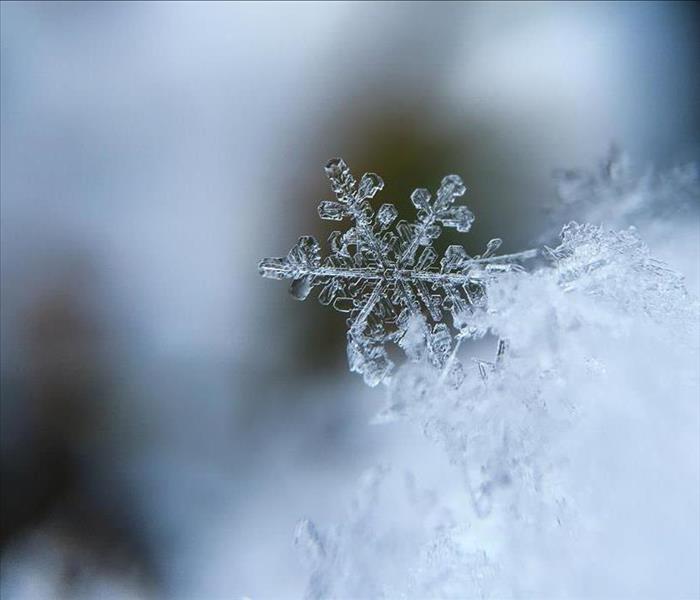 Just like snowflakes, no two winter storms are the same.
Just like snowflakes, no two winter storms are the same.
It’s winter in Western New York. It’s been a mild winter so far, but it’s winter all the same.
When you turn on the news and hear the meteorologist talking about the different kinds of winter weather we can expect, do you know what it all means? We’ll break it down for you.
Glossary of Winter Storm Terms
- Winter Storm: life-threatening. Combines heavy snow with wind capable of blowing that snow around, plus dangerously low wind chills.
- Blizzards: dangerous variant of winter storms that have especially strong winds that result in low visibility. Can also pick up snow that has fallen to create a “ground blizzard.” Winds must be over 35mph and visibility must be ¼ mile or less for at least 3 hours to qualify as a blizzard.
- Ice Storm: a storm which also leads to at least .25” of ice accumulating on exposed surfaces. Walking and driving may be dangerous due to these conditions, and tree branches and powerlines may also be at risk of snapping under the weigh to the ice.
- Lake Effect Storms: the result of cold, dry air masses moving over the Great Lakes and picking up moisture. That air then dumps that water as snow south and east of the lakes.
- Snow Squalls: brief but intense snow showers with gusty winds.
- Snow Flurries: light snow for a short duration, with little to no accumulation expected.
- Snow Showers: snowfall for a brief period of time at varying intensity, with some accumulation expected.
- Sleet: when snowflakes melt partially as they fall through pockets of warmer air, this leads to sleet. Usually, the melted snow refreezes on its way to the ground, resulting in precipitation that is partially or fully frozen and may bounce on impact.
- Freezing Rain: when snowflakes melt completely as they fall due to falling through warmer layers of air. This water does not refreeze even as it passes through freezing air on its way to the ground, but it does become “supercooled” and will instantly refreeze when it comes into contact with anything at or below a freezing temperature. This phenomenon can lead to significant accumulation of ice on the ground, on roads, and on other objects. If enough ice accumulates, freezing rain can be upgraded to an ice storm.
Suffer damage after a winter storm? We can help. Call 716-646-6684.
Hail Damage in Hamburg? We Can Help.
12/3/2020 (Permalink)
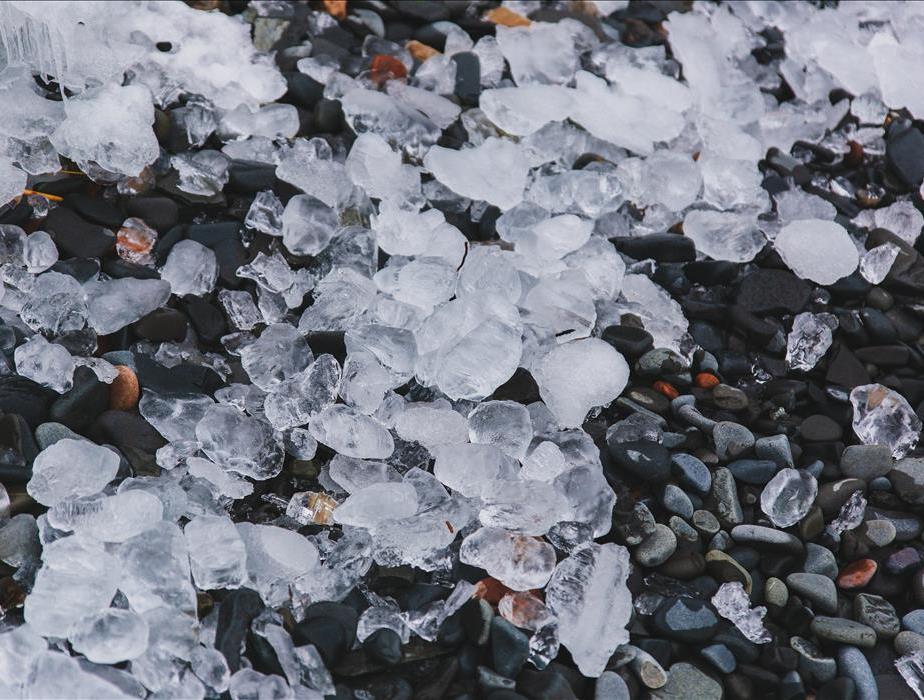 Hail comes in all shapes and sizes.
Hail comes in all shapes and sizes.
Hail storms are rare enough here in Western New York that they can be kind of a novelty. Hop on Instagram after it starts hailing and you’re sure to find plenty of videos filmed through the window of people marveling at the ice falling from the sky.
Of course, if your home or property is damaged by hail, it becomes no laughing matter. SERVPRO of The Southtowns is here to help you to make hail damage “Like it never even happened,” including if hail damages your roof. If you’re worried about this kind of storm damage, read on.
What Leads to Hail Damage?
Obviously, hail leads to hail damage, but there are a variety of other factors that can affect how serious that damage is.
Wind direction and wind speed determine where hail falls, and how hard it falls. The size and density of those hailstones is also important, and that’s determined by the temperature and weather conditions.
Different building materials are more susceptible to hail damage than others. Aluminum siding might get dinged or dented by hair, but vinyl siding and wood shakes can crack. Large hailstones can even puncture roof shingles, especially in older roofs. Natural barriers, like trees, landscaping, fences and even nearby homes can help to shield you from damage as well.
How Can You Tell If Your Roof Has Hail Damage?
Different shingles will react differently. With asphalt or composition shingles, damage may appear to be random. Roof felt may be exposed and asphalt may appear to be shiny. Areas of impact may also be soft to the touch.
With wooden shingles, you’re looking for splits in the shingles. Splits may be brown or orange in color, with sharp corners and edges, or with little to no deterioration at all.
All of that said, it can be difficult to determine if the damage on your roof is actually from hail, or if it's just normal wear and tear. Exposure to weather and sunlight over time will naturally age shingles and make them brittle. Blistering, cracking, loss of granules, flaking and the development of algae are also par for the course.
Still, if you think hail has damaged your home, it pays to contact your insurance agent and discuss putting in a claim. And if the damage is significant enough that you need a tarp up to prevent further damage from the weather, call SERVPRO of The Southtowns at 716-646-6684 - we’re here to help.
Storm Damage on Hoover Beach? We’ll Be There.
12/2/2020 (Permalink)
Over the past year and a half, we’ve seen some of the most severe windstorms in recent memory coming off of Lake Erie. And few communities were harder hit than Hoover Beach. SERVPRO of The Southtowns was there to help, and if another storm rolls through, we’ll be there to help again, putting our experience not only restoring damages but helping residents to deal with the insurance implications to work.
A Brief History of Storms
The “Halloween Storm” of 2019 kicked things off, with winds greater than 60 miles per hour pushing in windows and blowing water and debris into people’s homes.
This damage was especially pronounced in Hoover Beach, with some residents saying it was the worst storm they’d ever endured in their tenure there.
After the Halloween Storm, SERVPRO of The Southtowns was out in force, helping Hoover Beach’s residents to remove debris, mitigate water damage and pick up the pieces.
We made it "Like it never even happened." Little did we know that, just over a year later, we’d see the same kinds of severe winds - this time, over multiple days.
The storms in November 2020 also boasted 60-plus mile per hour winds over the course of multiple days. Much of the damage occurred on a Sunday, when many residents were out watching the Bills and weren’t home to observe or contain the issues.
SERVPRO of The Southtowns responded to this storm as well, helping residents to clear debris, extract water, and figure out how to put their lives back together.
How SERVPRO Helps
SERVPRO of The Southtowns offers 24/7/365 emergency service, meaning that no matter when damage occurs, we can be on-site within four hours of your call to begin emergency mitigation. With a full-time reconstruction team on staff, we can also do more than just mitigate and restore damages - we can truly make it “Like it never even happened,” and put your home back together.
Past that, our experience dealing with emergencies in general, and lake storm damage on Hoover Beach in particular, makes us uniquely qualified to work with insurance providers to find the best path forward. Our goal, always, is to provide you with the best restoration solution possible within your coverage, your budget and your needs.
Need our help? Call 716-646-6684 anytime - we’re here for you.
Post-Storm and Disaster Scams in Western New York
12/2/2020 (Permalink)
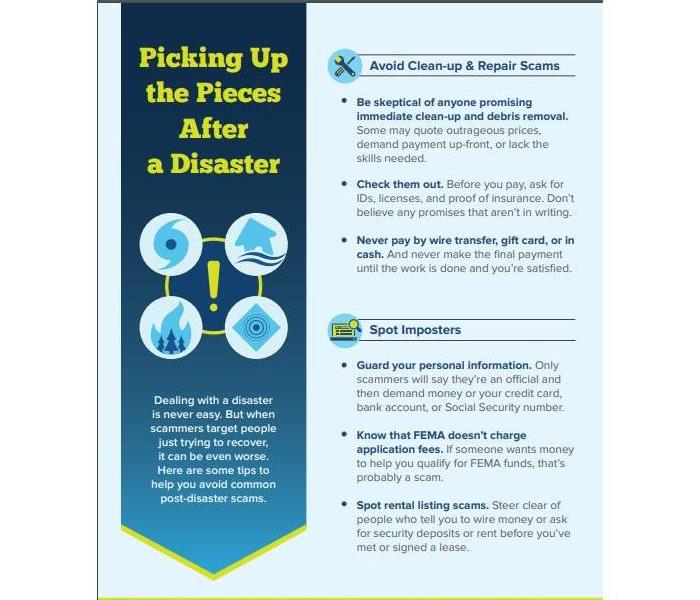 The FTC's "Picking Up The Pieces After a Disaster" flyer gives great tips for identifying and avoiding scammers.
The FTC's "Picking Up The Pieces After a Disaster" flyer gives great tips for identifying and avoiding scammers.
It sounds counterintuitive, but here at SERVPRO of The Southtowns, we wish no one ever needed us. We care a lot about our customers, and we wish they never suffered a disaster in the first place.
Unfortunately, emergencies happen, and we’re grateful that we’re able to help people pick up the pieces.
Some of the most heartbreaking stories we hear, however, are about times when our customers had disasters, and they didn’t know to call us.
Post-disaster scams happen. They’re more prevalent in hurricane zones, where widespread damage is more commonplace, but that doesn’t mean they can’t happen here in Western New York.
You don’t have to take our word for it. The Federal Trade Commission recently put out tips for identifying and avoiding scams after a disaster because it had become such a widespread problem. Here’s what they suggest:
- If someone approaches you promising clean-up and debris removal immediately, be skeptical and don’t just say yes. It can be tempting to hire the crew that’s standing right in front of you, but if you don’t do a bit of research before saying yes, they may end up charging you astronomical prices, and they may not even have the skills or resources to really get the job done right.
- Instead, do your homework. Ask to see their ID, licenses and proof of insurance. Get a written estimate before agreeing to proceed with work, even if they insist that “insurance will cover everything.”
- Talk to your insurance company before proceeding. Ask if they have heard of the company that you’re considering working with, and get a sense of what will and will not be covered, and how much it will be covered for.
- Be extra careful if someone claims to be a government official. Scammers have started to claim to be affiliated with FEMA or other government agencies to collect Social Security numbers, credit cards and banking information. They may also charge you an “application fee” to put in an application with FEMA. Those fees are usually part of the scam.
- When it comes time to render payment, don’t pay by wire transfer, gift card or in case. You want your payment to be traceable and verifiable. Don’t pay upfront, either - withhold full payment until the work is done and you are satisfied.
- Rental scams are also prevalent in major disasters. If someone approaches you with a short-term rental option if you’re displaced from your home, be wary if they ask you to wire them money, or demand payment before you’ve met or signed a lease.
- Charity scams have also become more prevalent. After a disaster, scammers pop up claiming to be collecting money for the victims. Make sure you do your research before giving.
If you suspect that someone might be scamming you, go to ftc.gov/complaint to report it.
And if you need disaster relief, or you just want a second opinion, call SERVPRO of The Southtowns at 716-646-6684. We’re here to help.
Damaged in a Storm? Work with Someone Who Can Put Things Back Together.
12/2/2020 (Permalink)
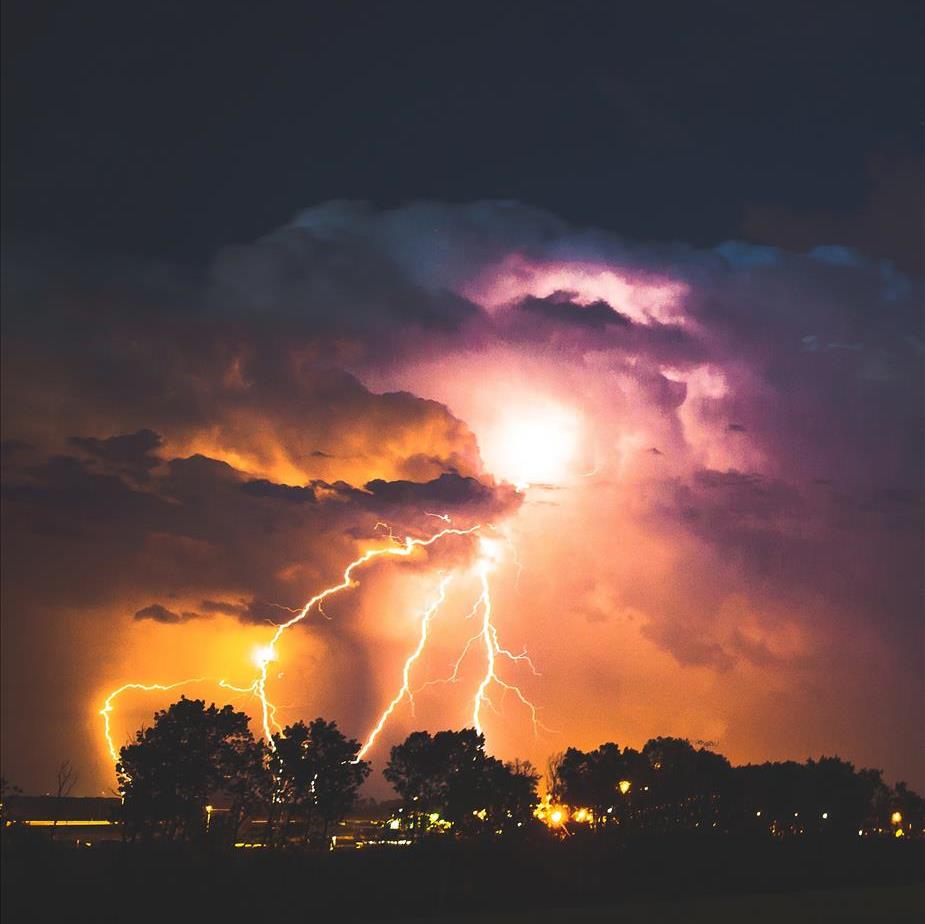 Storms happen. SERVPRO of The Southtowns can help.
Storms happen. SERVPRO of The Southtowns can help.
What’s better - having 5 companies help you out after you suffer from storm damage, or working with one?
Let’s put it a different way. What’s easier - herding one cat, or herding ten?
You get the point. Especially when you’re dealing with a catastrophe in your own home, you want to limit the amount of complexity that you’re dealing with.
Don’t take our word for it. JD Power, in their recent 2020 Property Claims Satisfaction Study, found that one of the most important factors in resolving an insurance claim satisfactorily was “single voice.”
By “single voice,” they mean limiting the amount of vendors and stakeholders that you’re working with so that you can streamline the process of putting your life back together.
At SERVPRO of The Southtowns, we’ve made many investments in providing our storm damage customers with “single voice.” We’d like to focus on one in particular today.
Reconstruction: the Key to Single Voice
You may not realize it, but not every restoration company, or even every SERVPRO franchise, is the same. One of the things that sets SERVPRO of The Southtowns apart is that we have a dedicated, full-time reconstruction team on staff.
The benefits of this team for our customers go far beyond the work that they do. Our customers get a ton of peace of mind from knowing that, once the restoration work is complete, we’ll be able to transition seamlessly into rebuilding and reversing any damage that occurs. More than that, though, being able to work with our recon team means that they’ll avoid the headache of sourcing contractors, vendors, supplies and managing everyone’s different schedules just to get their reconstruction work done. They also know they’ll be working with a team that knows how to navigate the intricacies of different insurance situations to help to make sure they get the most bang for their buck.
In other words, when SERVPRO of The Southtowns can be the “single voice” of restoration and reconstruction, we’re able to provide benefits far beyond logistics. We make the entire process easier, seamless, and more straightforward than it would be otherwise, making it “Like it never even happened,” for more customers faster.
Need our help? Call 716-646-6684 today.
How to Quickly Assess Roof Damage After a Storm
6/9/2020 (Permalink)
 Your roof protects you. Will you return the favor?
Your roof protects you. Will you return the favor?
Let us paint a picture for you. All day, people at work have been talking up this “crazy storm” that’s supposed to roll in over Western New York overnight. Before the sun sets completely, you do notice some scary looking clouds grouping up. But when the storm finally arrives, it’s not so bad. The wind was outrageous, but the rain didn’t come down too hard. No big deal, right?
Wrong. The wind coming off of a severe thunderstorm can be upwards of 60 miles per hour, and even if the storm itself didn’t produce a ton of rain, the wind it brought along can easily be enough to damage your home, and specifically, your roof.
With that in mind, it pays to do a quick check after high winds blow through to make sure your roof is still intact. Here are some simple ways to spot roof damage after a storm.
Easy-to-Spot Signs of Roof Damage
Check your attic after the storm for any leaks or signs of water damage. Even if you don’t find puddles of water pooling up, you might find water stains on your walls or on your ceiling that can indicate that water has made its way through a hole in your roof into your structure.
You should also do a quick survey of your yard for any debris. Obviously, finding shingles on the ground is a telltale sign of roof damage, but other debris, like pieces of metal fascia, may be harder to spot. You’ll also want to take a quick look at what you can see of your roof from the ground – is there any visible damage to the roof, your exhaust pipes, or the areas where the roof meets the walls?
Finally, do a quick check for damage from falling or flying objects. Obviously, if a tree fell on your house, you’d notice, but it can sometimes be easy to miss damage from falling branches or dimpling from the impact of hail unless you go outside and check. Sometimes this damage may be merely cosmetic, but in other cases, it may lead to serious structural damage that has to be addressed.
We don’t recommend getting a ladder out and crawling around on your roof if you suspect serious damage - that can be dangerous, especially right after a storm. It pays off in the end to call a professional roofer for anything that’s quite that involved.
If you do find damage, take as many pictures as you possibly can and call your insurance agent. Hopefully, your homeowner’s policy covers the damage and you’re able to file a claim. And if you’ve suffered any water damage, or if you need roof tarping, call SERVPRO of The Southtowns ASAP at 716-646-6684. We’re here to help!
Protecting Your Home from a Blizzard in Western New York
6/9/2020 (Permalink)
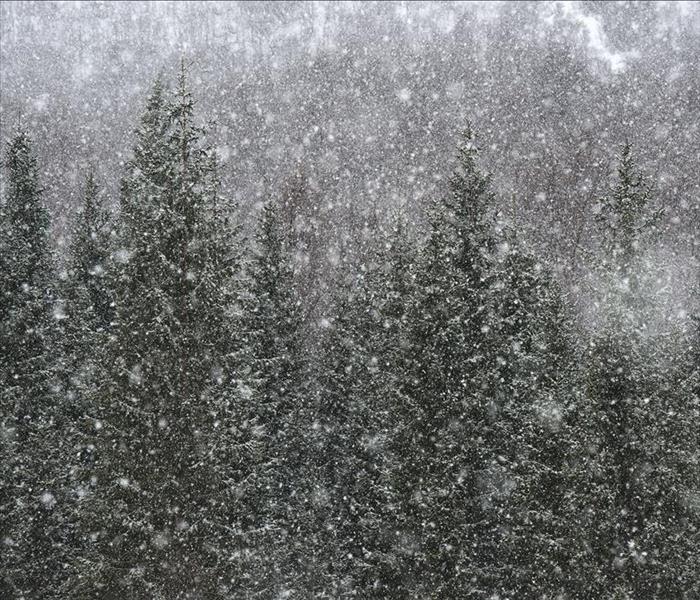 Trees can pose a major risk to your home after a blizzard.
Trees can pose a major risk to your home after a blizzard.
In Western New York, we’re no strangers to sudden heavy snowfall. People still speak with equal parts nostalgia and horror about the “Blizzard of ’77” and “Snowvember,” storm events that reminded us just how unforgiving the weather here can be.
The severity of those storms was, to a great degree, unexpected. That’s why it’s vital that you’re prepared for anything once the temperatures begin to dip. You never know when the next nicknameable storm event is coming here in WNY.
How should you react before, during and after a blizzard? We’ll walk you through the basics.
Before the Storm
The key to preparing yourself for a storm is to anticipate. What supplies might you need to not only wait on the storm, but to stay safe, secure and comfortable for a few days afterwards? What might you need to clear snow, stay warm and stay entertained?
Essentials like bottled water, canned foods, instant coffee and pre-packaged snacks are a must, because they can be prepared and eaten without the use of electricity. Extra batteries and flashlights are also smart to have on hand. If anyone in your household takes medication, you should also stock up on that. Stocking up on hygienic products like toilet paper also isn’t a bad idea, though you should be considerate and avoid hoarding more than you need.
Storm prep is also a good time to break out the board games and books you’ve been meaning to get to all those years. Even if sitting around and doing a puzzle isn’t your cup of tea, it’s superior to sitting around and doing nothing while you wait for the power to kick back on.
During the Snowstorm
When the snow finally starts, there’s not much you can do aside from kick back and relax. Avoid going outside unless you absolutely have to. That goes double for driving, no matter how much you pride yourself on your ability to navigate the snow. Just because you think you’re invincible behind the wheel doesn’t mean that accidents can’t happen.
If you absolutely do have to go out, make sure you dress for the occasion. Experts recommend three layers of clothing: one to absorb sweat, one to provide insulation, and one to keep out the cold.
After the Snowstorm
We’re going to assume you know that you should shovel your walkways and sidewalks and focus on what we know best: potential storm damage after a blizzard.
After a serious snowfall, it’s important to make sure that there isn’t too much weight on your roof. Heavy snow can lead to roof issues if not taken care of. As a rule of thumb, it will take about four feet of snow to cause significant stress to your roof. While it’s unlikely that you’ll see that kind of buildup after a single storm, a few storms in quick succession can absolutely lead to this kind of buildup, especially if there’s an ice dam forming in your gutters.
If you living in a single story home, you may be able to reach your roof with a snow rake, which can be purchased ahead of time at a hardware store, and clear snow yourself. If the snow is inaccessible from the ground level, however, it may be time to call in a professional.
You should also do a quick circuit around your house and make sure that snow is not blocking any of your furnace vents. Blocked furnace vents aren’t just inefficient – they can lead to the buildup of carbon monoxide in your home, which can have deadly consequences.
Finally, you should look for any exterior risks to your home stemming from the snowfall. The most obvious risk comes from nearby trees. Tree branches that are overloaded with snow are liable to break or fall, and if one falls onto your house, you could be looking at minor or major structural damage. And the last thing you need in the dead of winter is a hole in your roof.
Fortunately, clearing trees of snow isn’t too hard. Just take a broom or long pole and try to knock the snow off as best you can. You may have to wait a bit for ice to melt, and we wouldn’t recommend poking around a branch that’s already dangerously detached, but for the most part, you should be able to handle your trees on your own.
If you’ve done everything you can and you still ended up with storm damage after a blizzard, we can help. Call SERVPRO of The Southtowns today at 716-646-6684.
How to Prepare Your Business for a Winter Storm
6/8/2020 (Permalink)
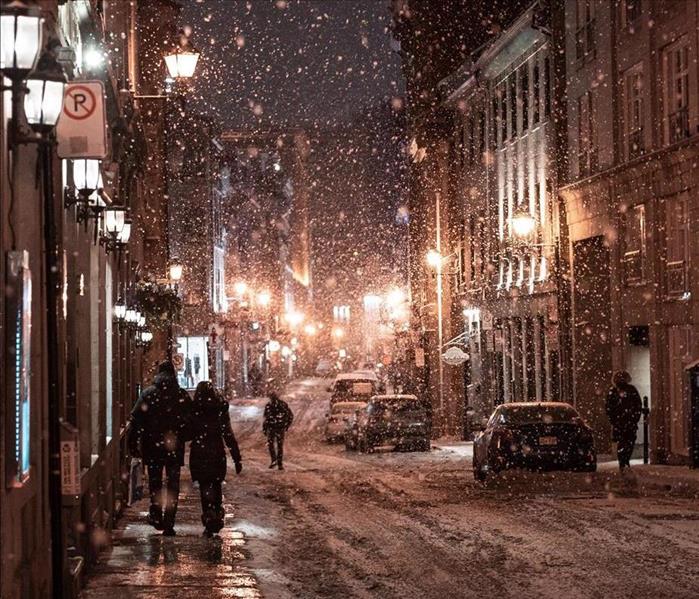 When a severe winter storm rolls in, will you be ready?
When a severe winter storm rolls in, will you be ready?
As a business owner, you know that the key to success is preparation. When the next big winter storm hits Western New York, will you be prepared? Here are seven tips to make sure that you’re ready.
Keep employees and customers updated.
If you have to close your store due to winter weather, make an effort to tell both employees and customers in as many ways as possible. At the very least, you should call your employees with updates and post on social media for your customers.
Take care of your sidewalks.
Don’t forget to salt the sidewalks before it’s too late – you don’t want someone slipping and falling outside your building.
Invest in a generator.
It’s better to have a generator and not need it than to need one and not have it, especially if you have any refrigerators, walk-in coolers or food storage on-site.
Check smoke and carbon monoxide detectors.
Bad storms do more than just bring ice, wind and snow – they can lead to all sorts of unexpected problems. Check the batteries on your smoke and carbon monoxide detectors before any severe weather event, especially if you think there’s a chance you might break out the generator.
Prep and protect your building.
Even if you don’t own the building where your business resides, it doesn’t hurt to prep your space before a storm. Make a note of any drafty areas, cracks in the structure or areas where water is known to leak. Replace old weather stripping or ask your landlord to do so. Make sure everyone who enters your building wipes their feet on a floor mat. Every little bit counts!
Call early for snow and ice removal.
If you’re anticipating significant ice or snowfall, call a removal company before the first flake hits the ground. The faster you can get rid of snow and ice, the sooner you’ll be able to welcome customers in and stop worrying about potential slip-and-fall claims.
Create an emergency contact list.
Before the storm hits, program your emergency contacts in your phone for easy access. These contacts might include the local police, the fire department, the fire company, the hospital, your insurance providers, your plumber, your electrician, and of course, a professional restoration company like SERVPRO of The Southtowns.
While winter storms can be both dangerous and unpredictable, if you follow these seven tips, you’ll be prepared for whatever comes your way.
Frozen Pipes and Ice Dams Oh My!
12/17/2019 (Permalink)
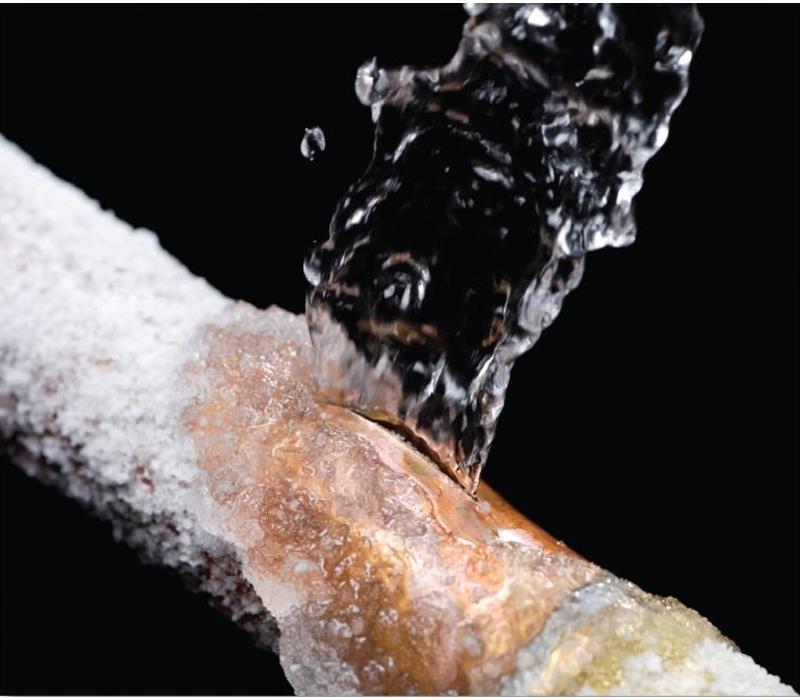 Be sure to take preventative action when it comes to frozen pipes and ice dams this winter storm season
Be sure to take preventative action when it comes to frozen pipes and ice dams this winter storm season
The first half of winter in WNY can be a bit confusing, to say the least. One minute its sunny and 40 degrees, the next it’s freezing raining, and before you know it its full out snowing! With almost three seasons in 24 hours, it’s important to be prepared for any kind of disaster Mother Nature may bring this time of year.
One thing to watch out for during this part of the season is frozen pipes, and ice dams. Our area is particularly prone to frozen pipes this time of year because the temperature can dramatically drop at any moment. Also, this is the time of year people like to travel for the Holidays. So, be sure to take preventative measures, and insulate exposed pipes and turn out outside water sources now so you don’t have a water emergency during an ice storm this season.
Also, this questionable weather can cause ice dames to form on your roof. Ice dams can cause a significant amount of water damage to your roof and home. So be proactive and keep your attic warm, and check your roof to make sure no dams have formed.
Follow these tips and you and your home will stay safe this winter storm season, no matter what Mother Nature decides to throw our way! And, as always, if you experience any damage from a winter storm this season please call the experts at SERVPRO of The Southtowns at (716) 646-6684 right away to make your storm damage, “Like it never even happened”.
Getting Prepared for Winter Storms in WNY
12/6/2019 (Permalink)
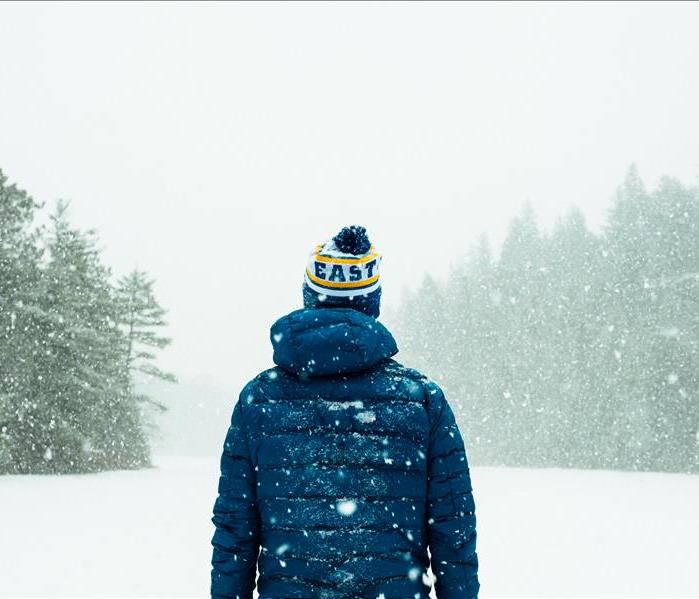 Get prepared for this winter storm season with these helpful tips.
Get prepared for this winter storm season with these helpful tips.
Storm season in WNY and the surrounding Buffalo, NY area includes snow storms. And, while snow storms may seem like they are no big deal, they can actually cause as much damage as a heavy rain storm! In fact, heavy snow can collapse a roof, ice dams can form on roofs causing water damage, and heavy snow storms can cause power to go out which can wreak havoc on your entire house.
So, when winter time rolls around in Buffalo, NY it is important to be prepared. Here are some things that you will want to keep on hand, and stored safely for when Old Man Winter shows up:
- Have a generator ready to go! During a snow storm is one of the worst times for the power to go out. Be prepared and keep a generator, as well as a full gas can on hand to keep the power, heat and sump pump going!
- Keep the roof as clear as you can. Now, obviously you won’t be able to keep the roof completely clear, but not allowing heavy snow to build up and allowing ice to form will keep the risk for your roof to collapse and ice dams from forming to a minim.
- Practice appropriate fire safety measures when using candles and space heaters during a snow storm. Should an emergency happen, Emergency Response crews will have a slower response time which means a longer time for the fire to burn and spread through the house.
Follow these snow storm safety tips and you and your home will stay safe during every storm this winter season. Should you experience any fire and/or water damage from any storm this winter season, please call the experts at SERVPRO of The Southtowns right away! A real person is always available any time of the day at (716) 646-6684. Let us make your fire and/or water damage, “Like it never even happened.”
Staying Safe This Winter Storm Season: Vehicle Safety Edition
12/6/2019 (Permalink)
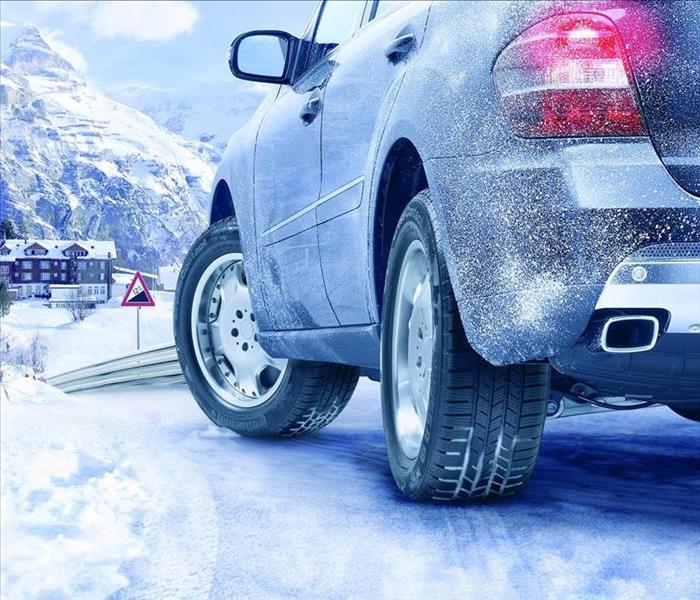 Staying safe during this winter storm season includes having a winter safety kit in your vehicle. Keep one of these in your car.
Staying safe during this winter storm season includes having a winter safety kit in your vehicle. Keep one of these in your car.
Previously, we have talked about preparing and protecting your home during a snow storm here in Buffalo, NY. But, what about preparing you and your car during a snow storm here in WNY? It’s happened before, the Weather Man calls for a major snow storm and we think, “Ok, I’ll believe it when I see it”, and we go about with our day. Then, BAM out of nowhere it starts snowing like crazy. Now you are left to try to navigate home, that’s if you don’t get stuck along the way.
But, what happens if you do get stuck in your vehicle during a snow storm? Are you prepared? You will be now! Just follow these tips to create a winter safety kit to store in your vehicle this winter:
- Always keep an ice scraper and a snow brush in your car. If you are staying still during a snow storm, that snow will build up fast. You will want to keep the car brushed off so you stay visible.
- Gloves, hats and a blanket to keep warm! You will eventually want to turn the car off to save on gas. These items will help keep you warm.
- A shovel, chain, or rope, to help dig yourself out.
- A flashlight and reflector and/or flares to stay visible at night.
- Rock salt, sand, or kitty litter to help give you traction when you are stuck.
- A first aid kit and a tool set.
- Jumper cables and a cell phone charger.
- And lastly, you should ALWAYS have AT LEAST half a tank of gas or more. We recommend staying as close to full as you can.
Keep all these items in a water proof bin (you can purchase these at any hardware or super center store) with the lid closed in your truck. This way you are prepared for any size disaster this winter!
High Winds In The Forecast, No Problem!
12/4/2019 (Permalink)
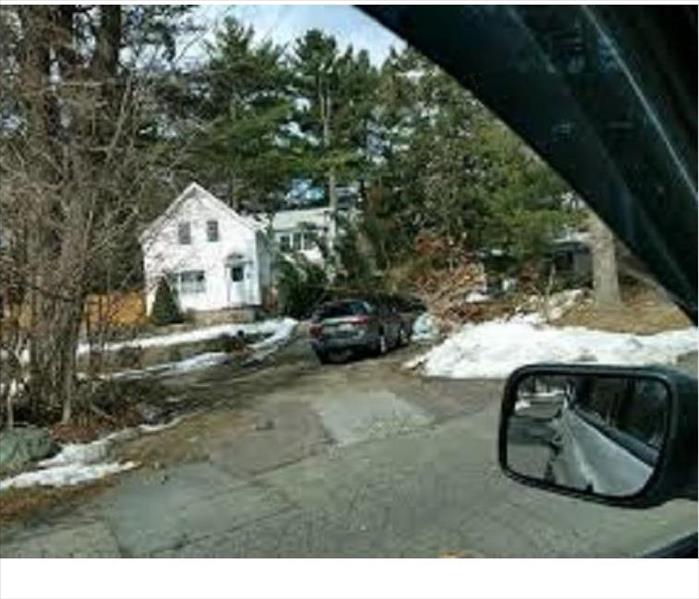 If high winds are in the forecast, be prepared with helpful wind storm tips to keep you and your home safe.
If high winds are in the forecast, be prepared with helpful wind storm tips to keep you and your home safe.
It seems that the WNY area has been experiencing a number of high wind storms this year. And, as we prepare to enter the Holiday season we will encounter another one. Winds up to 60 mph are expected in the area, and that can cause some significant storm damage to your home. On top of the high winds, our Buffalo, NY area could experience some heavy thunder and rain storms. This weather is setting the stage for some potentially serious damage.
Should the power go out in these storms, your sump pump is at major risk. With the heavy thunder storms predicted, all that rain can cause a sump pump overflow and major water damage to your home. Something we recommend to help you prevent a sump pump overflow during a power outage is a battery back-up or a water detection device. Both of these items are relatively inexpensive and can be found at local Hamburg, NY hardware stores. They can help cover the sump pump until you can access it, and alert you should water start to overflow.
Another preventative tip that we recommend is to be sure there are no dead, or potentially dangerous tree limbs near your home. Should one of those branches fall on your home during a rain storm, not only do you have reconstruction that needs to be done, but the rain will cause additional water damage as well!
Should you experience any water damage during these storms this year, please call the professionals at SERVPRO of The Southtowns to make it, “Like it never even happened.” Our office is always available to you at (716) 646-6684.
WNY Not Immune To Major Storm Damage
12/4/2019 (Permalink)
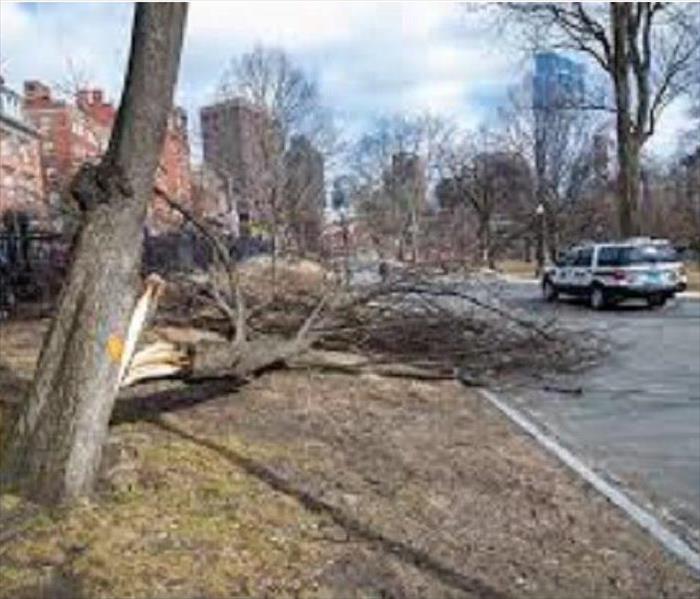 The WNY area is not immune to storms that cause major damage. So be prepared and practice these safety tips.
The WNY area is not immune to storms that cause major damage. So be prepared and practice these safety tips.
Staying safe during a WNY storm is important. Unfortunately, the WNY area is not immune to sever storms, especially in 2019. We may not have to deal with hurricanes or tornadoes, but heavy and severe thunder/rain storms can cause massive amounts of damage to your home.
Here are our tips for staying safe during this storm season:
- Should you need to use candles for light, be sure to keep them away from flammable materials such as paper, curtains, or furniture. They should also be kept on steady, flat surfaces out of reach from little hands. And NEVER fall asleep with a candle burning.
- Keep a battery operated cellphone charger in the home. Keeping your phone charged when the power out is important should you ever need to contact the authorities. Try putting your phone on battery saving mode, and stay off of it as much as you can. Both of these things will help prolong the phone’s battery life.
- Make sure your sump pump has a battery backup and/or a water detection device near it. When the power goes out in the middle of the night, don’t be stuck watching or stressing over your sump pump. A battery backup and a water detection will give you peace of mind and some security until the power comes back on or you can arrive home to check it.
Practice these tips during the next Buffalo, NY storm and you will weather the storm safe and sound. And, should you experience any fire and/or water damage during a storm, call the professionals at SERVPRO of The Southtowns at (716) 646-6684 right away to make your water damage, “Like it never even happened.”
What To Do In A Flood Emergency
6/20/2019 (Permalink)
Floods are the most common natural disaster in the United States, and WNY has seen its fair share of flooding over the years. It is important to follow proper safety measures before, during and after a flood because failing to evacuate flooded areas, entering flooded waters or remaining after a flood has passed can result in injury or death. Here is what you need to know when it comes to floods. For more information and resources, please visit Ready.gov.
Floods may result from rain, snow, storm surges, and overflow of dams and other water systems. They can develop slowly or quickly, remember flash floods come without warning. And, floods can cause outages, disrupt transportation, damage buildings and create landslides. If you are under a flood warning find shelter right away! DO NOT try to swim, dive or walk through flooded waters. Just six inches of water can knock you down. Remember, Turn Around. Don’t Drown.
If your area experiences a flood, here are some proper safety tips to help you and your family survive the disaster.
- Depending on where you are, and the impact and warning time of flooding, go to the safe location that you have previously determined.
- If told to evacuate, do so immediately. Remember to NEVER drive around barriers, they are there to safely direct traffic out of flooded areas.
- Listen to EAS, NOAA Weather Radio, or local alerting systems for current emergency information and instructions.
- Stay off bridges over fast moving water.
- If your vehicle is trapped in rapidly moving water, then stay inside. If water is rising inside the vehicle, then seek refuge on the roof.
- If trapped in a building, then go to its highest level. Do not climb into a closed attic. You may become trapped by rising floodwater. Only go to the roof if necessary. Once you are there, signal for help.
Be sure to listen to authorities to determine when it is safe to return home. Do not touch electrical equipment if wet, in order to avoid electrocution. Remember to avoid wading in floodwaters as there can be snakes and other animals, and dangerous debris floating around. Also, underground or downed power lines can electorally charge the water.
WNY Still At Risk For Storms This Summer
6/18/2019 (Permalink)
Finally, the snow is gone and summer has arrived (well kind of). But, that doesn’t mean WNY isn’t still at risk for storms. Thunder and lightning storms still pose a threat in the WNY area. Whether you are located in Downtown Buffalo, NY or on the outskirts of Elma, NY, you are still at risk when it comes to thunder and lightning storms.
Of course prevention is KEY when preparing for any type of storm. Here are some helpful tips from Ready.gov to help you PREPARE for a storm.
- Know your area’s risk for thunder storms. In most places, they can occur year round and at any time.
- Sign up for your community’s warning systems.
- Identify nearby, sturdy buildings close to where you live, work, study and play.
- Cut down, or trim trees that may be in danger of falling on your home.
- Consider buying surge protectors, lightning rods or a lightning protection system to protect your home, appliances and electronic devices.
Now that you’ve taken the proper preventative measures to protect your home and family during a thunder/lightning storm, here are some helpful tips to use DURING a storm:
- When thunder roars, go indoors. A sturdy building is the safest place to be.
- Pay attention to weather reports and warnings of thunderstorms. Be ready to change plans if need be to somewhere indoors. Always have a backup plan.
- If inside, avoid using running water or landline phones. Electricity can run through plumbing phone lines.
- Unplug appliances and other electronic devices, and secure outdoor furniture.
- If boating or swimming, get to shore immediately and seek shelter in a sturdy building or vehicle.
- Avoid flooded roadways. Turn around, don’t drown! As little as six inches of moving water can knock you down. One foot of moving water can sweep your vehicle away.
AFTER the storm, be sure to:
- Listen to authorities and water forecasts for information that is it safe to go outside. And for safe instructions regarding potential flash flooding.
- Watch for fallen power lines and trees. Report them immediately.
https://www.ready.gov/thunderstorms-lightning
Rain Rain Go Away
12/3/2018 (Permalink)
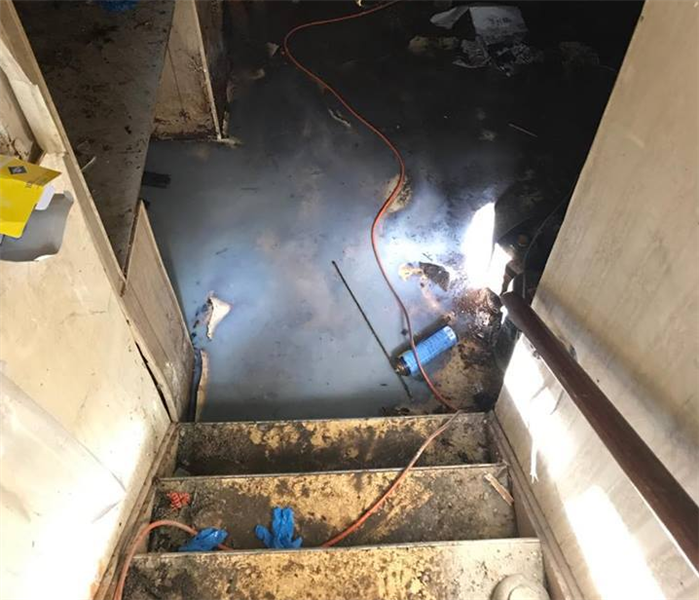 A wet weather forecast can lead to water damage in your home. Contact a professional from SERVPRO of The Southtowns immediately.
A wet weather forecast can lead to water damage in your home. Contact a professional from SERVPRO of The Southtowns immediately.
Increased rain during the fall and early winter seasons in the Buffalo area often causes an increase of water damaged basements due to failed sump pumps and overwhelmed storm drains.
If you discover water damage in your home, the experts at SERVPRO of The Southtowns are Here to Help.
Time is key when it comes to stopping and restoring water damage.
SERVPRO of The Southtowns recommends these helpful tips until help arrives:
Do:
- Remove as much excess water as possible by mopping and blotting.
- Wipe excess water from wood furniture after removal of lamps and table top items.
- Place aluminum foil or wood blocks between furniture legs and wet carpeting.
Don’t:
- Leave wet fabrics in place; dry as soon as possible. Hang furs and leather goods to dry seperatly at room temperature.
- Leave books, magazines or other colored items on wet carpets or floors.
- Use TVs or other household appliances while standing on wet carpets or floors, especially not on wet concrete floors.
If you do experience water damage anywhere in your home, please call the professionals at SERVPRO of The Southtowns immediately at 716-646-6684. Time is crucial when dealing with water damage, so do not delay.
When Time Counts, Choose the Team With the Fastest Response
12/3/2018 (Permalink)
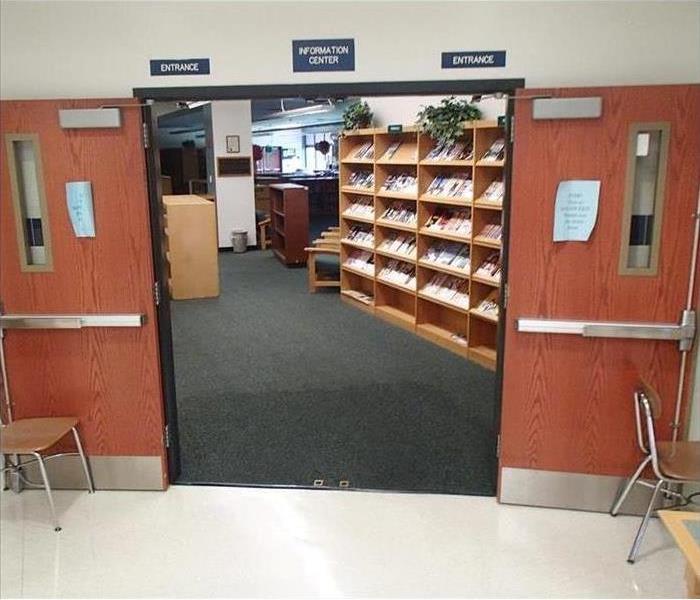 When time is of the essence, call SERVPRO of The Southtowns to make it, "Like it never even happened".
When time is of the essence, call SERVPRO of The Southtowns to make it, "Like it never even happened".
No one plans for a disaster, but when it strikes, time is of the essence to restore and protect your property.
Our team is available 24/7, so when the sump-pump fails at 6pm or a fire strikes at 2am, our team can begin the restoration process immediately.
Once our office is contacted, our team arrives on location within four hours, guaranteed. This allows us to begin cleanup immediately and cut down on restoration costs.
SERVPRO of The Southtowns works with all major insurance companies and has long standing relationships with local adjusters to help the claim process run smoothly.
When the drain backed up at a local high school, the Superintendent of Buildings and Grounds contacted our office and a team was onsite in less then an hour. With a quick response and cooperation between all parties involved, the school was able to open it's doors for classes on schedule.
Storm Damage Specialist in Buffalo, NY
12/3/2018 (Permalink)
 SERVPRO of The Southtowns is ready to help during any storm and water damage.
SERVPRO of The Southtowns is ready to help during any storm and water damage.
We're Highly Trained Storm Damage Specialists
As a leader in storm and water damage restoration, SERVPRO of The Southtowns has the specialized training and expertise to restore your home back to its pre-storm condition. Our restoration process puts an emphasis on scientific drying techniques, progress monitoring and documentation.
- Water Damage Restoration Technician
- Applied Structural Drying Technicians
We Have the Resources to Handle Storms and Disasters
We can access the resources and personnel of over 1,700 Franchises to handle major storms and disasters. We also have access to special Disaster Recovery Teams strategically located throughout the country to respond to catastrophic storms and events.
Locally Owned Company with National Storm Resources
We live and work in this community too; we might even be neighbors. As a locally owned and operated business, SERVPRO of The Southtowns is close by and ready to respond to your flood or storm damage emergency. We are proud to be an active member of the Buffalo community and want to do our part to make our community the best it can be.
Proper Training Makes A Difference
12/3/2018 (Permalink)
 Our Training Supervisor Taylor Braun reviews best practices and techniques with the crew every Friday morning.
Our Training Supervisor Taylor Braun reviews best practices and techniques with the crew every Friday morning.
Training is something that is very important here at SERVPRO of The Southtowns. We believe that reviewing proper training is somthing that should be done on a regular basis.
The Training Supervisor at SERVPRO of The Southtowns, Taylor Braun, reviews water pumps with us in preparation of the rainy season. This time of year, a high volume of our customers require basement pump out and we have the equipment to perform this service. There are a number of different types of water pumps available to pump out standing water from one inch to many inches.
At SERVPRO of The Southtowns we are dedicated to the continuing education of our entire staff, every Friday morning we host an educational seminar for the crew and staff to review equipment use, best practices, new procedures, and upcoming industry changes.
Having a crew that is knowledgeable and confident gives our customers the best service during their times of need.
We make water damage, "Like it never even happened".
Highly Trained Restoration Technicians to Restore Your Home
12/3/2018 (Permalink)
 Proper training is key when dealing with restoring fire/water damages. It can be the key between restoring vs. replacing.
Proper training is key when dealing with restoring fire/water damages. It can be the key between restoring vs. replacing.
SERVPRO of The Southtowns is an IICRC firm. The Institute of Inspection, Cleaning and Restoration Certification (IICRC) creates the standards for the restoration industry and provides training and certification to restoration companies. IICRC Certified Firms have the right to display the IICRC Certified Logo.
IICRC Certified Firms must
• Present accurate information to consumers and conduct business with honesty and integrity.
• Require a technician on all jobs who has been formally trained and passed all required tests.
• Require a continuing education program to keep technicians up-to-date on the latest changes in the industry.
• Maintain liability insurance to protect all parties in the event of an accident.
• Maintain a written complaint policy and agree to Better Business Bureau or similar arbitration to resolve disputes, and accept the conclusions and recommendations of arbitration.
The IICRC Develops The Standards For The Restoration Industry
The IICRC has been the driving force in establishing the main industry standards and reference guides for professional carpet cleaning, water damage restoration and mold remediation. These IICRC standards take years to develop and require the coordination of experts in the field: manufacturers, industry organizations, insurance professionals, training schools, contractors, and public health professionals.
Every five years, the standards are reviewed and updated. The water damage restoration field changes rapidly with advancements in technology and science, and therefore the standards must evolve to keep pace.
About SERVPRO of The Southtowns
SERVPRO of The Southtowns specializes in the cleanup and restoration of residential and commercial property after a fire, smoke or water damage event. Our staff is highly trained in property damage restoration and we are an IICRC Certified Firm. We believe in continuous training: from initial and ongoing training at SERVPRO’s corporate training facility to regular IICRC-industry certification, rest assured our staff is equipped with the knowledge to restore your property.
Essential Emergency Apps For When Disaster Strikes
6/19/2018 (Permalink)
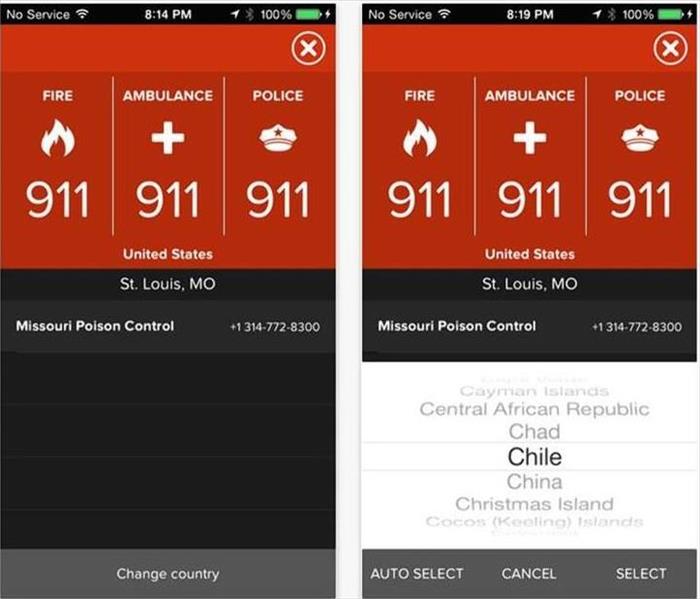 These 5 Apps could be life savers in an emergency situation.
These 5 Apps could be life savers in an emergency situation.
Our cellphone devices have become an essential in our day to day lives. We use them for planning out our schedules, keeping in touch with friends and family, and even to get the daily news. There really is an App for everything, including Apps that could help you during a disaster or emergency. Here are five useful Apps that will help during an emergency.
- ubAlert
This App is a global social network where users share alerts about disasters (both natural and man-made). People can post what they are experiencing first hand as the disaster unfolds.
- Official FEMA App
Use this app to arrange a meeting spot with your family, find an interactive emergency kit, and learn basic disaster safety tips.
- Life 360 Family Finder
This app lets you and your family members’ share your exact location at all times. You can turn off the location feature when there is no emergency and use the chat to stay in touch.
- !Emergency!
If you travel outside the country this app is ESSENTIAL. Don’t know where the nearest embassy is? Haven’t memorized the equivalent for 911, police or other medical services in the country you are visiting? Not a problem because this app will do it all for you.
- Winter Survival Kit
A perfect app designed for WNY winters. This app details what you should keep in your car and notifies emergency services for you. It even alerts you to turn off the car every 30 mins to check the exhaust pipe for snow build up, protecting against carbon monoxide poisoning.
https://mashable.com/2013/10/07/storms-emergency-apps/#NegV8q1Akiqc
Count On Our Highly Trained Technicians To Restore Your Home After A Major Storm
6/19/2018 (Permalink)
 You can count on the SERVPRO of The Southtowns family to be there for you. Even after a major storm.
You can count on the SERVPRO of The Southtowns family to be there for you. Even after a major storm.
SERVPRO of The Southtowns is an IICRC firm. The Institute of Inspection, Cleaning and Restoration Certification (IICRC) creates the standards for the restoration industry and provides training and certification to restoration companies. IICRC Certified Firms have the right to display the IICRC Certified Logo.
IICRC Certified Firms must
• Present accurate information to consumers and conduct business with honesty and integrity.
• Require a technician on all jobs who has been formally trained and passed all required tests.
• Require a continuing education program to keep technicians up-to-date on the latest changes in the industry.
• Maintain liability insurance to protect all parties in the event of an accident.
• Maintain a written complaint policy and agree to Better Business Bureau or similar arbitration to resolve disputes, and accept the conclusions and recommendations of arbitration.
The IICRC Develops The Standards For The Restoration Industry
The IICRC has been the driving force in establishing the main industry standards and reference guides for professional carpet cleaning, water damage restoration and mold remediation. These IICRC standards take years to develop and require the coordination of experts in the field: manufacturers, industry organizations, insurance professionals, training schools, contractors, and public health professionals.
Every five years, the standards are reviewed and updated. The water damage restoration field changes rapidly with advancements in technology and science, and therefore the standards must evolve to keep pace.
About SERVPRO of The Southtowns
SERVPRO of The Southtowns specializes in the cleanup and restoration of residential and commercial property after a fire, smoke or water damage event. Our staff is highly trained in property damage restoration and we are an IICRC Certified Firm. We believe in continuous training: from initial and ongoing training at SERVPRO’s corporate training facility to regular IICRC-industry certification, rest assured our staff is equipped with the knowledge to restore your property.
When Rain Is In the Forecast...
11/29/2017 (Permalink)
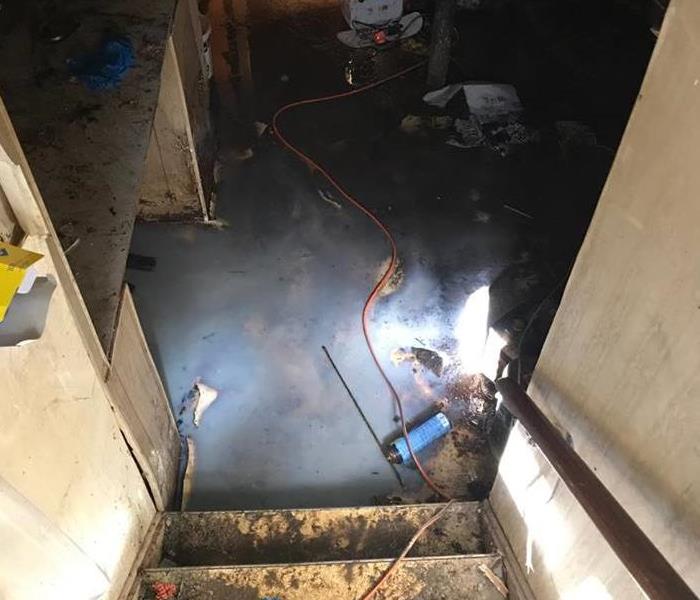 Time is key when dealing with water damage. The experts at SERVPRO of The Southtowns are "Here to Help."
Time is key when dealing with water damage. The experts at SERVPRO of The Southtowns are "Here to Help."
Increased rain during the fall and spring season in Buffalo often causes an increase of water damaged basements due to failed sump pumps and overwhelmed storm drains.
If you discover water damage in your home, the experts at SERVPRO of The Southtowns are Here to Help.
Time is key when it comes to stopping and restoring water damage.
SERVPRO of The Southtowns recommends these helpful tips until help arrives:
Do:
- Remove as much excess water as possible by mopping and blotting.
- Wipe excess water from wood furniture after removal of lamps and table top items.
- Place aluminum foil or wood blocks between furniture legs and wet carpeting.
Don’t:
- Leave wet fabrics in place; dry as soon as possible. Hang furs and leather goods to dry seperatly at room temperature.
- Leave books, magazines or other colored items on wet carpets or floors.
- Use TVs or other household appliances while standing on wet carpets or floors, especially not on wet concrete floors.
Review of Water Pumps
11/29/2017 (Permalink)
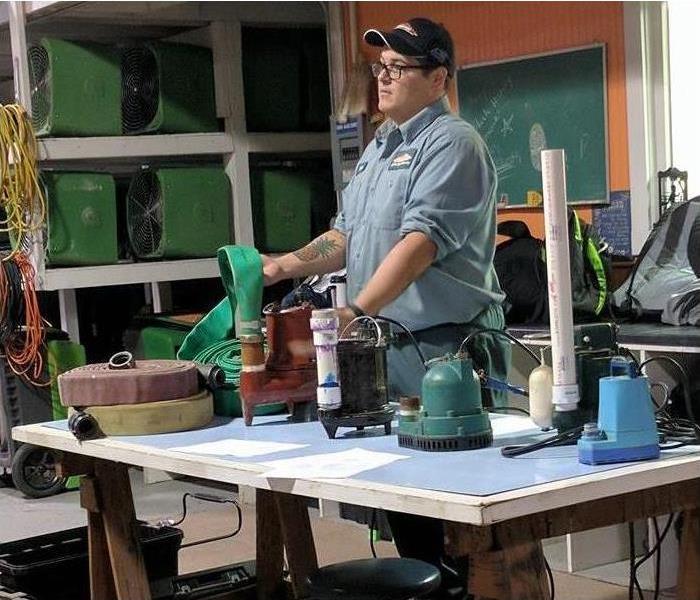 Taylor reviews water pump equipment.
Taylor reviews water pump equipment.
The Training Supervisor at SERVPRO of The Southtowns, Taylor Braun, reviews water pumps with us in preparation of the rainy season. This time of year, a high volume of our customers require basement pump out and we have the equipment to perform this service. There are a number of different types of water pumps available to pump out standing water from one inch to many inches.
At SERVPRO of The Southtowns we are dedicated to the continuing education of our entire staff, every Friday morning we host an educational seminar for the crew and staff to review equipment use, best practices, new procedures, and upcoming industry changes.
Having a crew that is knowledgeable and confident gives our customers the best service during their times of need.
There is no job too big or too small for SERVPRO!
When Storms or Floods hit Western New York, SERVPRO is ready!
6/19/2017 (Permalink)
SERVPRO of The Southtowns specializes in storm and flood damage restoration. Our crews are highly trained and we use specialized equipment to restore your property to its pre-storm condition.
Faster Response
Since we are locally owned and operated, by Thom and Lyn Braun, we are able to respond quicker with the right resources, which is extremely important. A fast response lessens the damage, limits further damage, and reduces the restoration cost.
Resources to Handle Floods and Storms
When storms hit Western New York, we can scale our resources to handle a large storm or flooding disaster. We can access equipment and personnel from a network of over 1,700 Franchises across the country and elite Disaster Recovery Teams that are strategically located throughout the United States.
Have Storm or Flood Damage? Call Us Today SERVPRO of The Southtowns
Thunder Storm Safety Tips
10/4/2016 (Permalink)
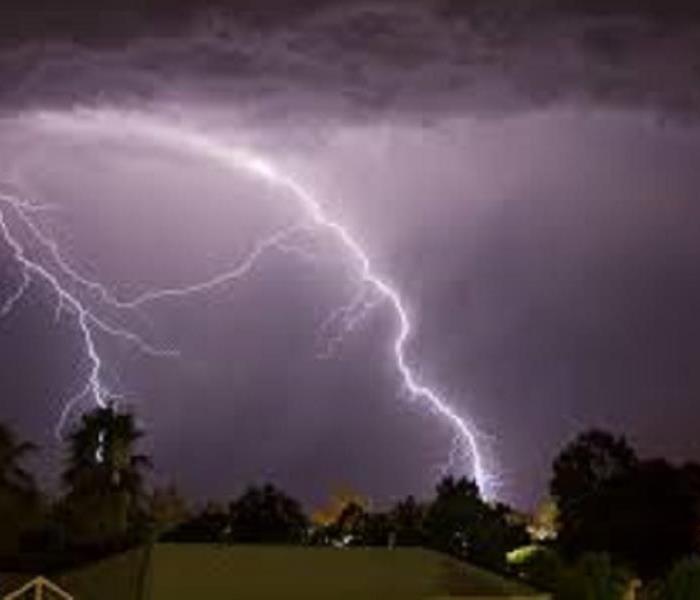 Thunder and Lightening Storm
Thunder and Lightening Storm
Lightning from thunderstorms injures hundreds of people in the U.S. every year and kills dozens. These causalities are easily preventable if you follow these simple safety tips.
1) Listen to the radio and television for severe thunderstorm warnings. The National Weather Service issues warnings for counties and even sends out text messages now to our mobile phones when storms are on their way. Pay attention and heed their warnings for safety.
2) Remember the 30 second rule. If there is not 30 seconds in between the time you see lightning and hear thunder, it’s time to go indoors.
3) Lightning typically strikes the tallest object around so if there is a storm, move indoors if at all possible or into a hard top car if there are no buildings around.
4) Once inside, stay away from windows, plumbing and electrical. If lightning strikes outside, it can carry inside via land lines.
5) Get out of boats and away from bodies of water. If you can hear thunder than you are close enough to get struck by lightning.
6) If you are caught outside, avoid standing by tall isolated objects such as trees. Find a grouping of small trees surrounded by taller ones, avoid bodies of water, and if there is only open spaces, look for a dry low-lying area and try to make yourself the smallest target possible. Do not lay flat on the ground, rather crouch with your head between your knees. Sheds, outhouses and tents provide no safety so keep this in mind when you are hiking or camping. Always think ahead and be prepared in the event that you are caught in a thunderstorm and if possible, turn around on your trip and head home.
Faster to Any Size Disaster in Buffalo, NY
10/3/2016 (Permalink)
 SERVPRO of The Southtowns is faster to any size disaster. 24/7 we are on call for you.
SERVPRO of The Southtowns is faster to any size disaster. 24/7 we are on call for you.
Faster to Any Size Emergency
In many cleaning and restoration situations, immediate action is needed. With over 1,650 U.S. and Canadian Franchise locations, SERVPRO is strategically positioned to be faster to any size emergency. An immediate response helps to minimize the damage and the cleaning and restoration costs.
Water is particularly invasive, quickly spreading throughout your property and being absorbed into floors, walls, furniture, etc. SERVPRO of The Southtowns arrives quickly and starts the water extraction process almost immediately.
Water Damage Timeline
Within Minutes
- Water quickly spreads throughout your property, saturating everything in its path.
- Water is absorbed into walls, floors, upholstery, and belongings.
- Furniture finishes may bleed, causing permanent staining on carpets.
- Photographs, books, and other paper goods start to swell and warp.
Hours 1 - 24:
- Drywall begins to swell and break down.
- Metal surfaces begin to tarnish.
- Furniture begins to swell and crack.
- Dyes and inks from cloth and paper goods spread and stain.
- A musty odor appears.
48 Hours to 1 Week:
- Mold and mildew may grow and spread.
- Doors, windows, and studs swell and warp.
- Metal begins to rust and corrode.
- Furniture warps and shows signs of mold.
- Paint begins to blister.
- Wood flooring swells and warps.
- Serious biohazard contamination is possible.
More Than 1 Week:
- Restoration time and cost increase dramatically; replacing contaminated materials and structural rebuilding may be extensive.
- Structural safety, mold growth, and biohazard contaminants pose serious risks to occupants.
When Storms or Floods hit Western New York, SERVPRO is ready!
4/11/2016 (Permalink)
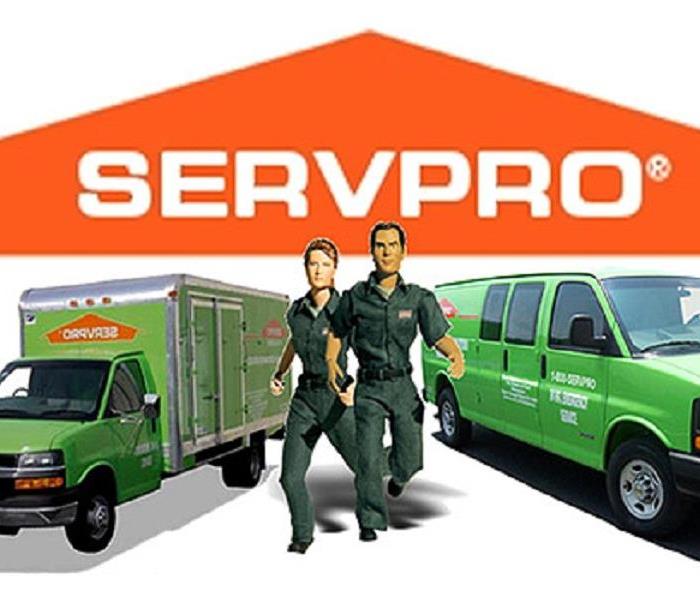 Our highly trained crews are ready to respond 24/7 to storm or flood damage in Western New York.
Our highly trained crews are ready to respond 24/7 to storm or flood damage in Western New York.
SERVPRO of The Southtowns specializes in storm and flood damage restoration. Our crews are highly trained and we use specialized equipment to restore your property to its pre-storm condition.
Faster Response
Since we are locally owned and operated, by Thom and Lyn Braun, we are able to respond quicker with the right resources, which is extremely important. A fast response lessens the damage, limits further damage, and reduces the restoration cost.
Resources to Handle Floods and Storms
When storms hit Western New York, we can scale our resources to handle a large storm or flooding disaster. We can access equipment and personnel from a network of over 1,700 Franchises across the country and elite Disaster Recovery Teams that are strategically located throughout the United States.
Have Storm or Flood Damage? Call Us Today SERVPRO of The Southtowns






 24/7 Emergency Service
24/7 Emergency Service























